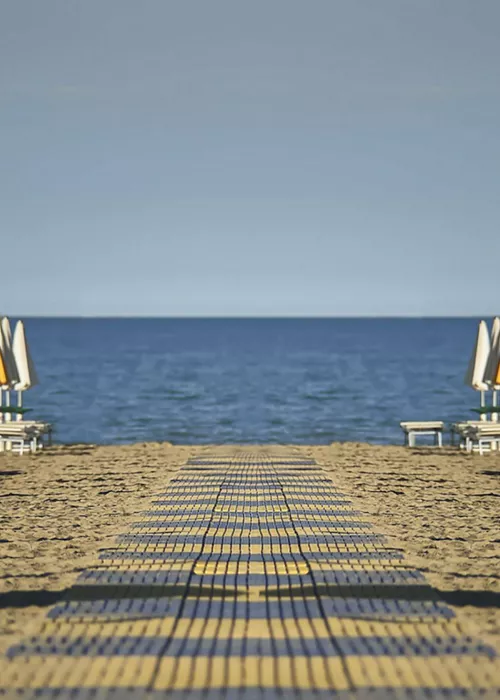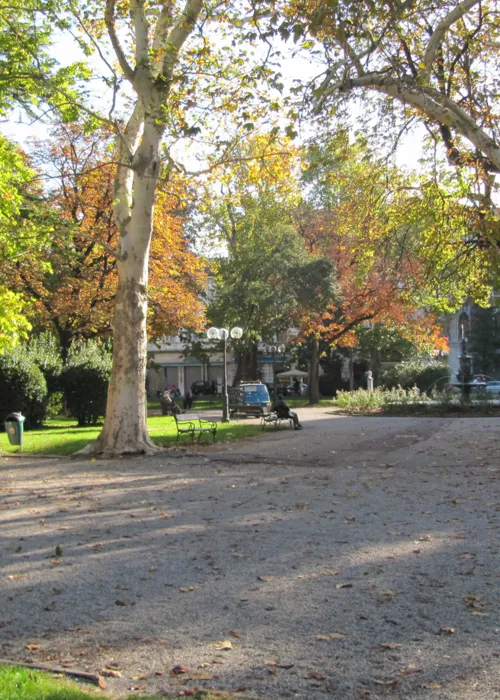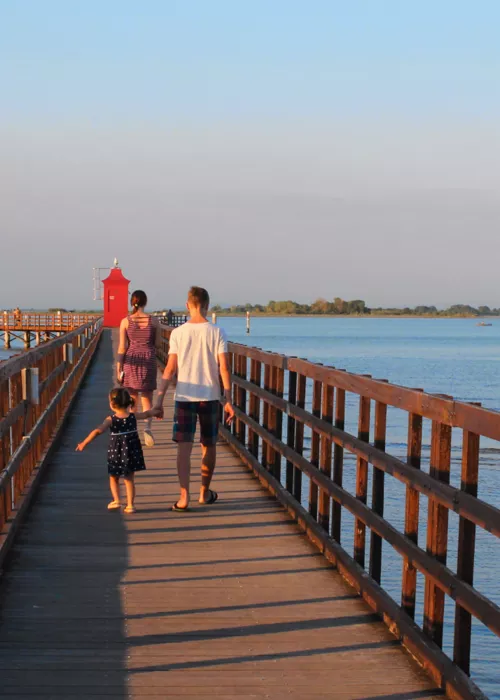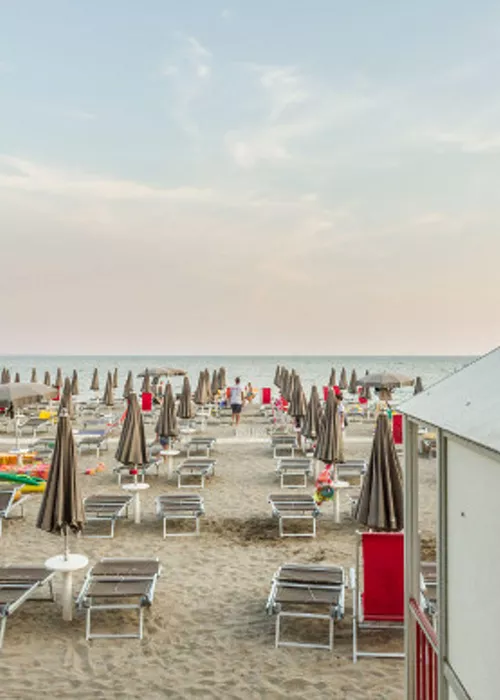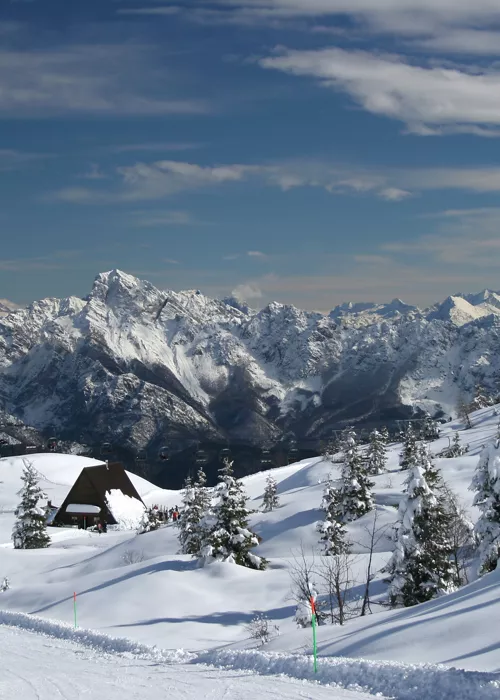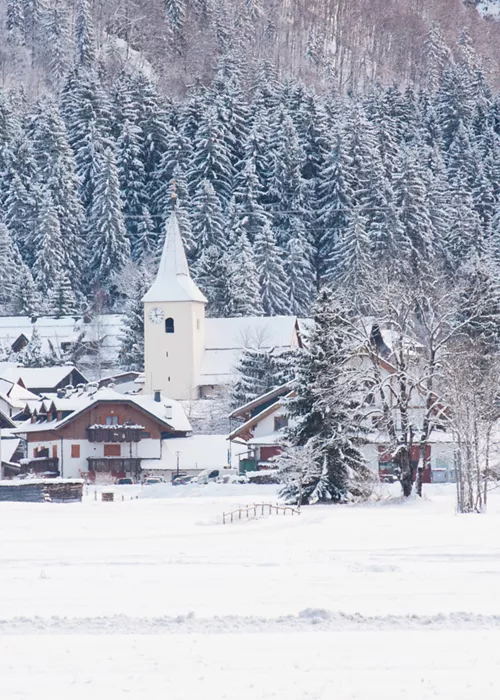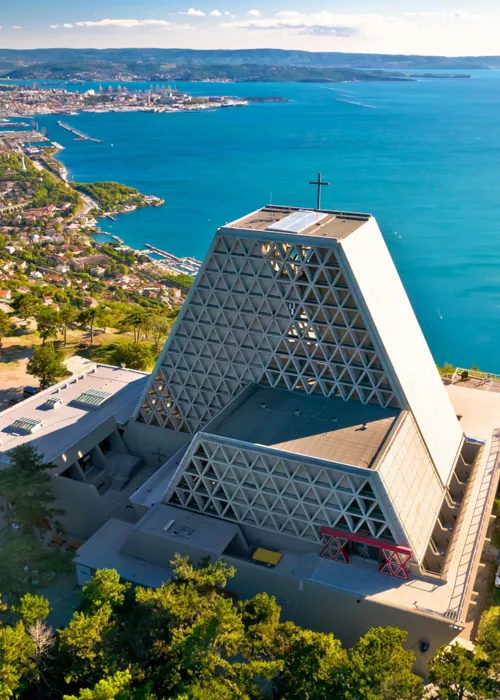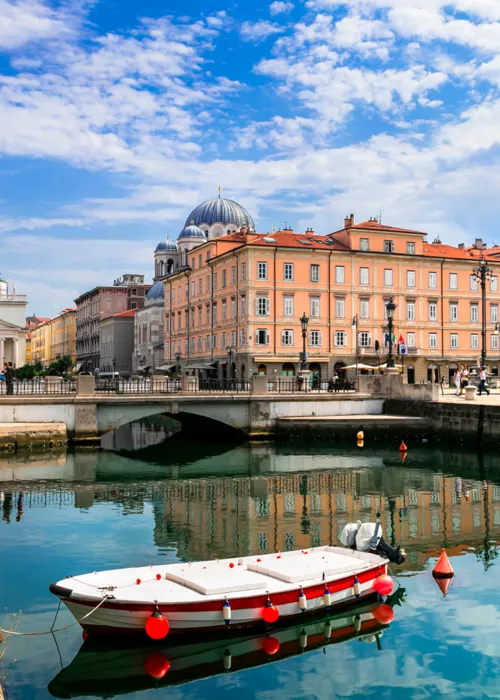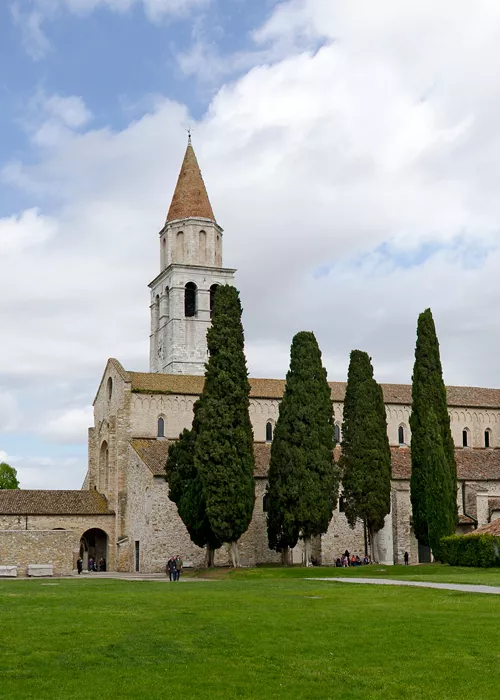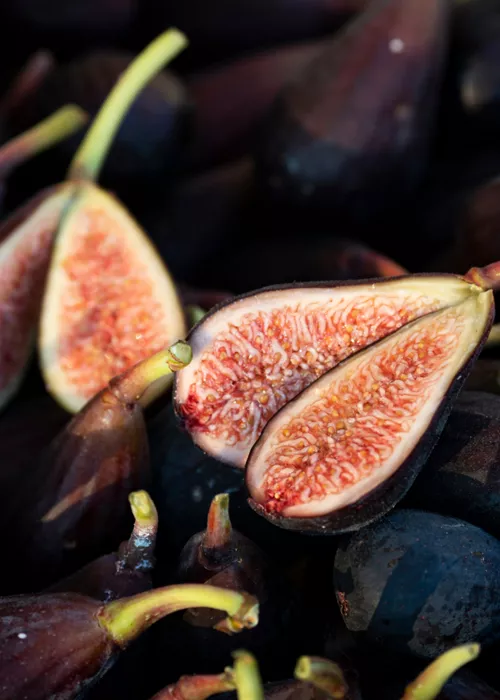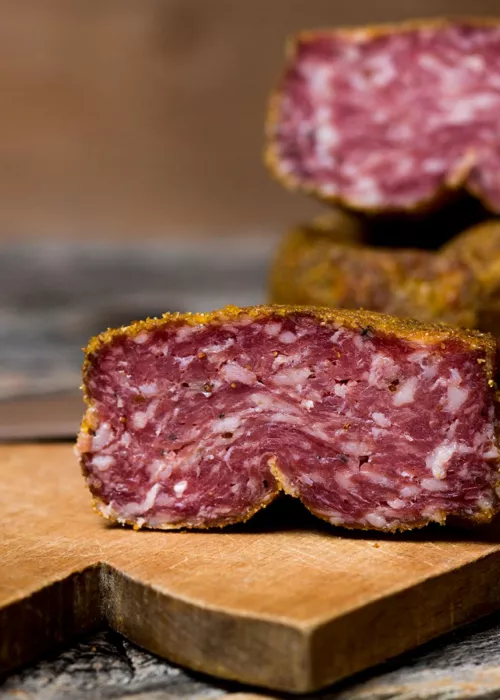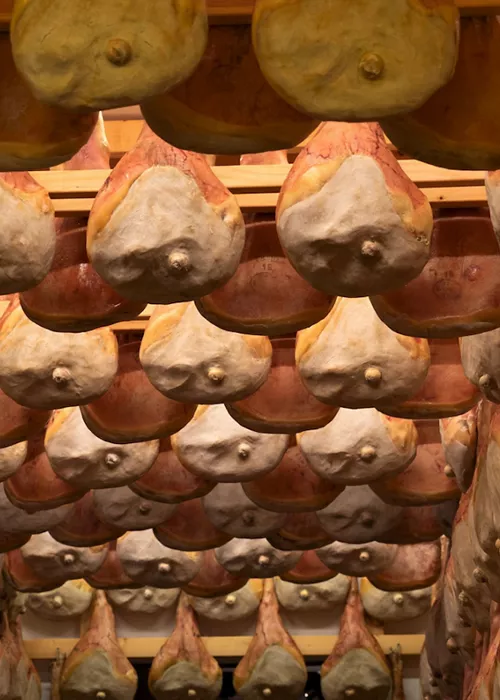Grado, Aquileia and Cormons - 3 historic villages to visit in Friuli-Venezia Giulia
7 minutes

Grado, Aquileia and Cormons are three small towns located in the southeastern part of the Friuli Venezia Giulia region. Three different villages with interesting historical heritages and beautiful landscapes - let’s discover them together!
Grado

Grado is a small seaside resort located on the Adriatic coast, on an island connected to the mainland by two bridges. It is nicknamed "the island of the sun", which gives an idea of its favourable climate - in early October, I was lucky to have sunshine welcome me when I reached Grado!
Top 5 Not to be missed
- Wandering through the historical center of Grado
- Watching the sunset over the sea
- Canoeing on the Adriatic Sea
- Riding a bike
- FOOD/WINE - Boreto, a local fish dish
The historical center of Grado is really stunning, a medley of amazing old buildings and charming alleys perfect to discover on foot. It’s the perfect place to get lost between tiny little streets - who knows, you might find wonderful surprises around the next corner!
The city center also has many small stores and welcoming terraces. One must-do while in Grado is trying the boreto, a local specialty. It is a fish dish prepared with a very original vinegar-based sauce.
Among the monuments to visit, don't miss the two churches in Grado - the Basilica of St. Euphemia and the Church of Santa Maria Delle Grazie. They are both really beautiful from the outside, but it's also worth pushing their doors open to discover the interior of these two buildings.
Make sure you also don’t miss walking along the seaside, on the promenade. It’s the perfect place to watch the sunset!
If you enjoy sports, you’re in the right place. Grado is very well suited for bike rides, and when I arrived I was surprised by the number of bikes in the city! There are many bike paths and the terrain is flat, so it's really nice to get around by bike.
I rented a bike to discover the Regional Nature Reserve Valle Cavanata, one of the two protected areas near Grado, alongside the Regional Nature Reserve of the Mouth of the Isonzo of Isola della Cona. It’s a very nice place for birdwatching - there are hides and observation towers, allowing walkers to observe the birds living in these reserves without disturbing them.
Also, since you’re by the Adriatic, it would be a shame to leave Grado without a water activity, don't you think? Guida Naturalistica offers canoe trips in the Grado lagoon and Adriatic Sea.
I joined one of their tours and spent a wonderful day discovering the cliffs of Duino, east of Grado, from a canoe. What a pleasure to glide on the water and to enjoy a different point of view over these famous cliffs and Duino castle!
Grado - Useful information
Best time to visit: As Grado is very popular with tourists, I recommend visiting in the off season - May, June or September are excellent months, temperatures are pleasant and the crowds aren’t too big.
How to get there - Grado is 22 km from the Trieste Airport train station and 19 km from Cervignano-Aquileia-Grado station. Frequent buses leave from both stations to reach Grado.
Aquileia

Top 5 - Not to be missed
- Admiring the mosaics of the Basilica of Aquileia
- Visiting the various Roman remains
- Listening to the audio guide offered by the Tourist Office to visit the city
- Visiting the Archaeological Museum
- FOOD/WINE - Dolce Aquileia
Aquileia is definitely a must-visit destination near Grado. It is classified as a UNESCO World Heritage Site for its archaeological remains and its patriarchal basilica. It was in fact defined as "the most complete example of a Roman Empire city in the Mediterranean world" according to UNESCO.
You may never have heard of Aquileia, but the city truly has an incredible past. It was one of the richest and most important cities in the Roman Empire before its destruction by the Huns of Attila in the 5th century. The buildings found there are testament to this. I was really impressed, Aquileia is indeed an open air museum where you can walk among the remains of a Roman city! For instance, you can admire the remains of the forum, the cemetery, the river port and some residences.
I recommend starting your visit with a stop at the Tourist Office to pick up an audio guide. You can also download it on your phone, so you can always get info and explanations of all the places you visit. It is very interesting and it allows you to understand what the city must have been like in the past. It is also easy to imagine that most of the remains of Aquileia are still underground - the town is a huge archaeological reserve, where excavations are still ongoing.
One of the most exceptional sites to visit in Aquileia is undoubtedly the Patriarchal Basilica (Basilica of Santa Maria Assunta), dating back to Paleochristian times, with a remarkably well preserved mosaic floor from the beginning of the first century. Incredible, isn't it? I loved walking through this basilica listening to the audio guide, admiring the architecture and mosaics, and better understanding its history. This basilica has indeed played a major role in the evangelization of part of Central Europe. You should also not miss the buildings attached to the basilica - the belltower, the baptistery and the South Hall.
If you want to learn even more about Aquileia, don't forget to pay a visit to the National Archaeological Museum, where many objects found in Aquileia and its surroundings are collected. The museum allows you to understand the importance of the city as a commercial crossroads, but also to immerse yourself in the daily life and beliefs of the inhabitants during the Roman Empire.
After all these visits, I enjoyed a pleasant break at the Mosaico Pastry Shop, where I tasted the Dolce Aquileia, a pie inspired by the recipes of Ancient Rome and made with spelt flour filled with figs, honey and caramelized nuts. Truly a delightful treat, and the perfect way to end the day!
Aquileia - Useful information
Best time to visit - It is possible to visit Aquileia all year round.
How to get there - Aquileia is located 10km north of Grado. Buses run from Grado to Aquileia in just 10 minutes. The nearest train station is in Cervignano, from where there are bus connections to Aquileia. Cycling is also an excellent way to reach Aquileia, along the Alpe Adria trail.
Cormons

Top 5 Not to be missed
- Walking through the city center
- Visiting the Duomo di Sant'Adalberto
- Discovering Collio wines at the Enoteca di Cormons
- Walking along the Sentiero delle Vigne Alte
- Visiting a winemaker
Cormons is a small village famous for... its wines! Cormons is the wine capital of Friuli, and it is located in the heart of the 1500 hectare region of Collio Goriziano, which has been a protected designation of origin since 1989. The vineyards of Collio are spread over beautiful hills, and the combination of sandstone soil and favourable climate allow the production of high quality wines.
The center of Cormons is not very large, and it’s really fun to walk around. You can start in Piazza XXIV Maggio, the largest square in the village - it’s very pretty, and surrounded by a tangle of small cobblestone streets with lots to see, as well as shops and restaurants in the main street. Don't miss the Duomo di Sant'Adalberto, the imposing church dominating the center of Cormons: make sure you go in, as the interior is also very beautiful.
In Piazza XXIV Maggio there is another destination that will certainly please wine lovers - the Enoteca di Cormons is the wine bar of a cooperative that gathers about thirty winegrowers from the village. The staff will be happy to help you find the perfect wines, and will also be able to tell you which winegrowers to visit. A good first step to discover the wines of the region!
It would be a shame to visit Cormons without taking the time to walk through the vineyards that surround it. Cormons is the gateway to the Collio Goriziano, and you can’t leave without visiting this fascinating wine region.
I walked the Sentiero delle Vigne Alte, a pleasant path that is about 3 km long (6 km for the round trip). It is a very easy path, accessible to everyone, and it offers beautiful panoramic views of the vineyards.
You can start from either the La Subida stable or the beautiful Spessa Castle. Along the way, it is possible to stop to visit a winemaker, taste some wine, or even have lunch since some agriturismos offer meals. A nice gourmet walk through the vineyards is the perfect way to round up your time in Cormons!
Cormons - Useful information
Best time to visit - To see the vineyards with their leaves in, it is best to come in the Spring or Summer, or even in Autumn for the beautiful colours!
How to get there - Cormons is located 40 km northeast of Grado and 26 km southeast of Udine, near the border with Slovenia. It is possible to come by car and also by train, since Cormons has a train station.
Article written about the experience of Laurène Philippot.


